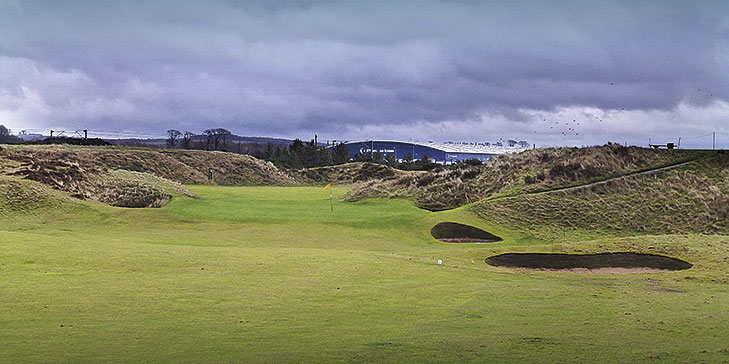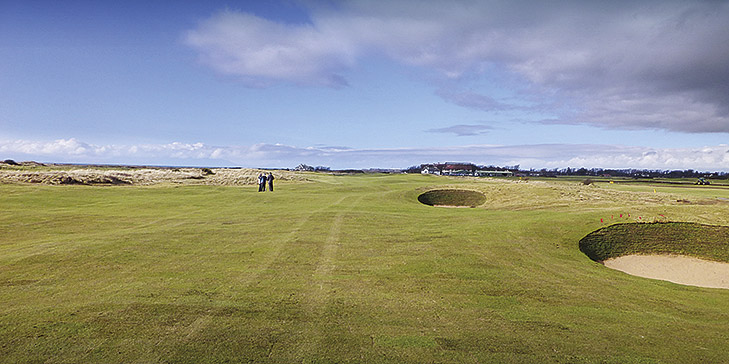Even within a group as select as the nine courses currently on the Open Championship rota, there is a hierarchy. Jack Nicklaus once memorably said that he enjoyed the Open courses less the further south they were, culminating in Royal St George’s, which he cordially disliked. Magazine and website rankings establish another hierarchy, as does, informally, the flow of tourist dollars and euros spent by visiting golfers keen to play where legends were made.
Even the members of Royal Troon accept they are not at the top of the Open hierarchy. Troon’s problem, such as it is, might best be summarised as a lack of identity. Nearby Turnberry has its spectacular run down the coastline, not to mention the memory of legendary Opens in 1977 and 2009. Muirfield is loved by the players and accepted almost universally as the best test of golf on the rota. And St Andrews, well... it’s St Andrews.
No-one could argue that Troon is not a very fine golf courseand a terrific championship venue. It has, in the Postage Stamp, one of the iconic holes in golf. It has a run of finishing holes, often played into the wind, tough enough to ensure that anyone who wins there has earned his crown the hard way. And, for much of the front nine holes, it gets closer to the sea than just about any of the Open courses.
 The new bunker threatening the tee shot on the short par four seventh
The new bunker threatening the tee shot on the short par four seventh
But, for some reason, Troon seems to inspire respect, rather than love, in golfers. The terrain is classic old-school links, with micro undulations aplenty, but few spectacular features. In some ways – as St Andrews proves – this kind of terrain is perfect for golf, but there is no doubt that golfers love big dunes.
So, trying to improve Troon – both as an Open venue and as a day to day course for members and visitors – is a twofold challenge. Naturally, there is a need to make the kind of subtle changes that make individual holes more interesting; but it’s also important to find one or two changes that move the goalposts, that make the course as a whole more memorable. Maybe it’s a sad reflection on today’s society that a hundred-plus year old course with a championship heritage going back to the 1920s needs to be made more immediately compelling. But, for architect Martin Ebert of Mackenzie & Ebert, who Royal Troon has retained to make alterations to the course in advance of 2016, when the Open returns to the Ayrshire course, it is reality.
Among a wide range of subtle alterations, then, Ebert has hit on three larger projects that should have a more obvious impact on the way the Troon course is perceived. The biggest and most dramatic, without a doubt, is the reconstruction of the long par four fifteenth, creating what could well be seen as the best (and also possibly the most difficult) hole on the golf course. But the creation of a new dune system behind the ninth green, blocking the view of the (let’s be honest) rather unattractive caravan park that sits next to it, and the recreation of an iconic bunker on the tenth hole will have a big impact too.
Let’s start at the tenth. Dr Alister MacKenzie, for all his great achievements as an architect, did precious little work on the great links of England and Scotland. His one-time partner Harry Colt, a much more Establishment figure, tended to be the ‘go-to’ architect for British clubs of the highest stature looking to upgrade their courses. But MacKenzie did work extensively at Troon in the 1920s, reconstructing the club’s Portland course. And, on the tenth hole of the Old course, he built a bunker, cutting it into the large dune ridge that must be carried from the tee: the only known MacKenzie work on any Open rota course.
At some point, the bunker was filled in, and the dune ridge became choked with gorse. Now, Ebert has restored it, while at the same time removing a lot of the gorse to show the dune to its best effect. In the same area, along with 1st Golf (the contractor carrying out the work) shapers Mike Smith and Marcus Terry, the architect has been able to extract a substantial amount of material to build the new dune behind the ninth green. The far end of the golf course – which has always had some of the most interesting land forms –has been transformed visually as well.
Ironically, the MacKenzie bunker will not enter the thoughts of Open competitors, who will simply blast their tee shots over the ridge. But as a visual statement it is significant; it looks great, and it honours the memory of one of golf’s greatest architects.
The alterations to the fifteenth hole will have a much greater impact. Part of Troon’s brutal run home, the hole has been lengthened in the past by moving the Open tee back and to the right of the nearby fourteenth green. But, in doing so, the fairway was brought to the right also, into an area close to the course’s main maintenance road, and one where the ground of the landing zone was flat and uninteresting (Ebert believes it was levelled at some point in the past).
 The most dramatic part of the project, has been the shifting and reconstruction of the first half of the fifteenth fairway
The most dramatic part of the project, has been the shifting and reconstruction of the first half of the fifteenth fairway
For the 1923 Open, the hole played from a tee left of the fourteenth green to a fairway landing area well left of the existing fairway, so that’s where Ebert has put the new Open tee and moved the first part of the fairway to. The most dramatic part of the project, has been the shifting and reconstruction of the first half of the hole’s fairway. Marcus Terry has done outstanding work here; the contours of the new fairway perfectly echo the classic rumpled land found nearer to the hole’s excellent green complex.
Drives from the new tee will need to be both powerful and well placed. Bunkers on the right side of the fairway guard the perfect landing area; there is space to play a shot past them into position A, but if the tee ball catches the newly-created slopes near the bunkers, it will run to the left, where the view of the green is compromised. The longest hitters might contemplate carrying the two bunkers to gain a significant advantage of line and length but the margin for error is slim. A four here, especially on Sunday of the Open, and into the prevailing westerly wind, will be very hard earned. The hole will, I think, be the most challenging, and possibly also the most interesting on the golf course.
A key part of the new-look fifteenth’s appeal lies in the construction work. The fairway contouring is exemplary, but the newly-built line of low dunes that lies to the right of the hole is simply remarkable. 1st Golf has developed custom made equipment for transplanting slabs of turf or heather, and the result is that the rough grasses have knitted together far more quickly than might otherwise have been the case. As greenkeepers will testify, transplanting heather and fescues is not easy; if the new equipment works as well on other courses as it has at Troon, they will find themselves in demand.
This article first appeared in Golf Course Architecture - Issue 36.